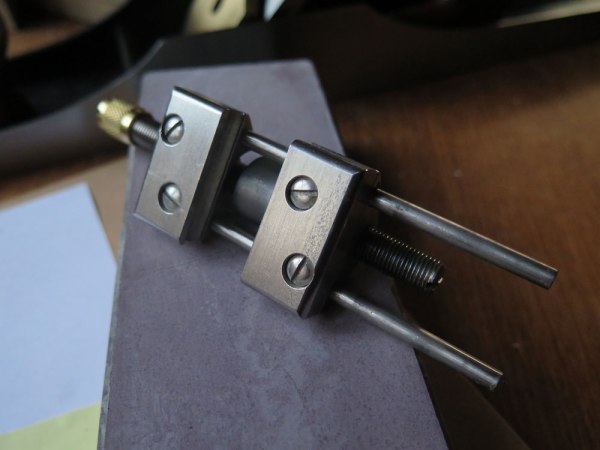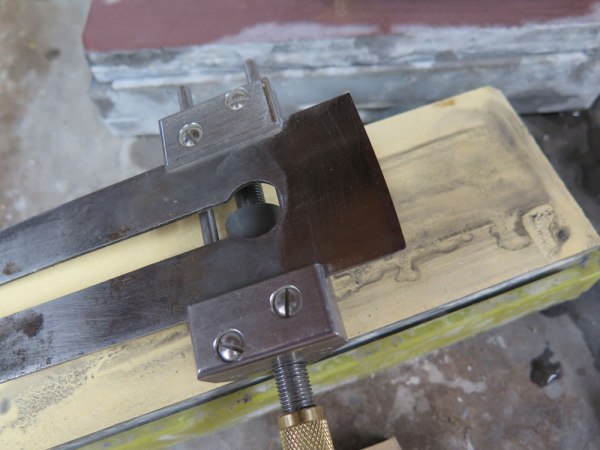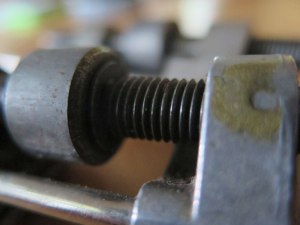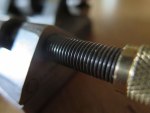
For almost two years now, I’ve been using a Lie-Nielsen honing guide to sharpen all my plane and chisel blades. It’s an outstanding little tool and was well worth the long wait for it to come into full production.
Unlike the old Eclipse guides, the Lie-Nielsen guide is solidly made from stainless steel and bronze. It offers a variety of swappable jaws so you can handle odd-shaped tools, such as skewed irons. And it has only one dovetail-shaped aperture for holding tools, which greatly simplifies your setup for sharpening and improves the accuracy of the tool’s angle to the stone (if that’s your bag).
In short, I love it. My old Eclipse now lies neglected in my “bin of discarded thingys” – I shall have to find a new home for it.
If you have recently purchased the new Lie-Nielsen guide (or plan to), here are a few notes on maintenance and use that will make your transition from the cheap-o guide to the Lexus a little easier.

Jack Plane Blades
Because the aperture for holding tools is lower on the Lie-Nielsen than on the Eclipse, I had to change the shape of my jack plane’s blade slightly. With the Eclipse guide, I could hone an iron that had about an 8” radius on its edge. When I put that same iron in the standard Lie-Nielsen (at a 35° honing angle) I could not hone the blade’s corners. The guide hit the stone before the corners of the blade did.
So I switched to a 10” radius – an equally valid historical curve – and everything works fine now. My jack is technically a little less aggressive with this shallower curve, but I cannot tell the difference.
Note: There are other ways around this (swapping to the tall jaws for mortise chisels is one path), but I seek to spend as little time sharpening as possible. Bottom line: You can make small changes to the way you sharpen (angles, radii etc.) to achieve the results you want with this jig. This was how I tackled the problem; your approach might be different.
On Gunk
Maintenance on the Eclipse guide was all about preventing its wheel from rusting and seizing up. As soon as it seized you were in danger of grinding a flat on the wheel, ruining the wheel.
I haven’t found the same problem with the Lie-Nielsen, even after heavy use by students. Two drops of light machine oil on the wheel’s bearing keeps it moving smoothly. It hasn’t seized once, and the wheel hasn’t even tarnished.
What you do need to look out for is sharpening gunk on the Lie-Nielsen’s screw threads. The pitch of the Lie-Nielsen’s screw is finer than that on the Eclipse. And the fit between the screw and the body is much tighter. These details make the Lie-Nielsen clamp down hard on your blade with only finger pressure (though it always is a good idea to secure the screw with a partial turn with a screwdriver).
But when the guide’s threads get swarf on them, the guide can be sluggish to open and close. So clean the threads occasionally with a little oil or degreaser and a stiff-bristled brush. Once a year seems to be enough for my heavy sharpening habits.
And that’s it. It’s a wonderful piece of engineering and a joy to use. Highly recommended. The Lie-Nielsen guide is $125 with the standard jaws. Accessory jaws are $25 to $35 each.
— Christopher Schwarz

